Click on images to enlarge
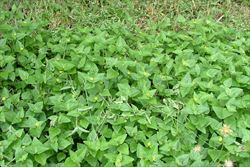
dense infestation in bushland (Photo: Sheldon Navie)
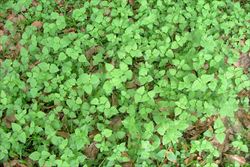
infestation growing in a lawn (Photo: Sheldon Navie)
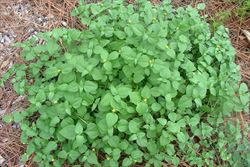
habit (Photo: Sheldon Navie)
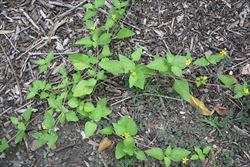
creeping habit (Photo: Sheldon Navie)
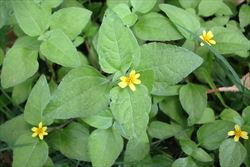
leaves and flower-heads (Photo: Sheldon Navie)
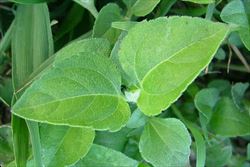
close-up of paired leaves sparsely covered in short hairs (Photo: Sheldon Navie)
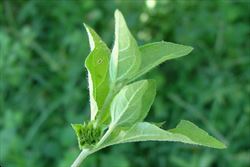
leaf undersides with longer hairs (Photo: Sheldon Navie)
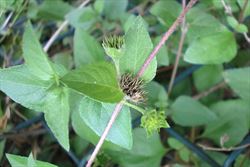
hairy stems and clusters of immature and mature fruit (Photo: Sheldon Navie)
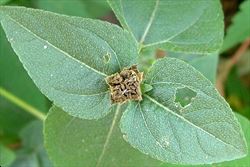
close-up of cluster of mature fruit (Photo: Sheldon Navie)
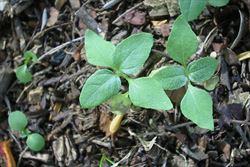
seedlings (Photo: Sheldon Navie)
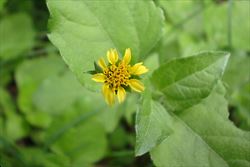
close-up of flower-head with several small yellow 'petals' (Photo: Sheldon Navie)
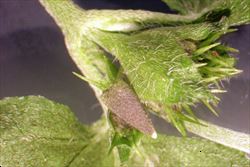
close-up of 'seed' topped with two spreading awns (Photo: Forest and Kim Starr, USGS)
Scientific Name
Calyptocarpus vialis Less.
Family
Asteraceae (Queensland, New South Wales, the ACT, Victoria, Tasmania, Western Australia and the Northern Territory)Compositae (South Australia)
Common Names
creeping cinderella, creeping cinderella weed, prostrate lawn-flower, sprawling horseweed, straggler daisy
Origin
Native to Mexico, Central America (i.e. El Salvador, Costa Rica, Guatemala and Honduras) and Cuba.
Naturalised Distribution
This creeping introduced plant is a widespread weed of the warmer parts of eastern Australia (i.e. in eastern Queensland and some parts of north-eastern New South Wales).
Widely naturalised in other parts of the world, including in southern USA (i.e. Arizona, New Mexico, Texas, Louisiana, Arkansas, Mississippi, Alabama, Georgia, Florida, South Carolina and Illinois) and on some Pacific islands (i.e. Kiribati, Midway Atoll and Hawaii).
Notes
Creeping cinderella weed (Calyptocarpus vialis) was first collected at Toowong, in Brisbane, in April 1946. It has spread significantly since its introduction and is now a common weed of lawns, parks, gardens, roadsides, disturbed sites, waste areas and plantation crops in the sub-tropical and tropical coastal regions of eastern Australia.
However, creeping cinderella weed (Calyptocarpus vialis) is also often found growing in urban bushland and riparian areas in south-eastern Queensland, and is reported to be invasive in the understorey of riparian forests in central Queensland. It has recently also spread into northern New South Wales, and is a potential weed of natural habitats in this region.

